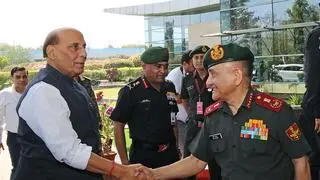The mid-term review of the Foreign Trade Policy (2015-20) has brought in additional relief worth ₹8,450 crore annually for the labour-intensive and micro, small and medium enterprises (MSME) sectors.
Exporters of labour-intensive items, such as leather and footwear, agriculture and marine products, handmade carpets, telecom and electronics components, and medical and surgical equipment, will now be eligible for 2 per cent higher incentives across-the-board under the popular Merchandise Export from India Scheme (MEIS), under the review released by Commerce and Industry Minister, Suresh Prabhu on Tuesday.
A number of services such as accountancy, architecture, legal, education and restaurant, too, will get similar relief under the Services Export from India Scheme (SEIS).
The incentives come at a time when exporters are struggling under the new Goods and Services Tax (GST) regime introduced in July. Prabhu said the government was committed to redress the problems. “It is not a one-time exercise but an ongoing effort. We will continuously revisit issues, identify challenges and address them on a real-time basis,” the Minister said.
Acknowledging that exporters had suffered due to problems in GST implementation, Prabhu said the government would sort it out together with exporters. “No new legislation can be made perfect in one go. I ask exporters to bear with us and be our partners in dealing with the problems,” he said, adding that a number of problems had already been sorted out.
Exporters who were upset by the drop in goods exports in October 2017, and were expecting a further fall over the next few months due to lower duty drawback rates (of input tax reimbursement) and slow refunds, seem more optimistic now.
“The higher incentives should start reflecting in export numbers from January. However, we are disappointed that a number of sectors were left out. Problems for exporters exist across sectors and the relief should have been for all,” said Ganesh Kumar Gupta, President, FIEO.
Other initiatives like the extension of validity of MEIS scrips from 18 months to 24 months and the provision of zero GST on sale of scrips will help the industry in a big way, Apparel Export Promotion Council Chairman Ashok Rajani said.
The MEIS is the most popular incentive for exporters, under which identified sectors are given duty exemption scrips that are fixed at a certain percentage of the total value of their exports. The scrips can be used to pay duties on inputs, including Customs duties.
An e-wallet system to address the liquidity problem being faced by exporters is likely to be operational from April 1, 2018, PK Das, Member, CBEC, assured exporters.
Finance Secretary Hasmukh Adhia pointed out that Input Tax Credit and IGST refunds for exporters were being expedited and stressed that the GST regime will be beneficial for exporters in the long run.
The government has also introduced a new, trust-based self-ratification system to allow duty-free inputs for export production on the basis of self-declaration.
With exports of goods lower than $300 billion in the last two years, the government is under pressure to give the sector a major boost. Exports in 2016-17 were $276.54 billion, compared with $314.14 billion in 2013-14.
The review of the FTP (2015-2020) was due earlier this year, but was delayed due to the implementation of the GST in July and the problems faced by exporters under the new dispensation taking centerstage.







Comments
Comments have to be in English, and in full sentences. They cannot be abusive or personal. Please abide by our community guidelines for posting your comments.
We have migrated to a new commenting platform. If you are already a registered user of TheHindu Businessline and logged in, you may continue to engage with our articles. If you do not have an account please register and login to post comments. Users can access their older comments by logging into their accounts on Vuukle.